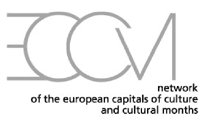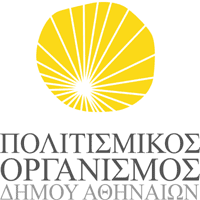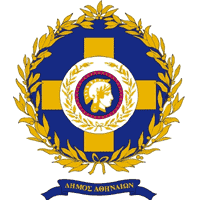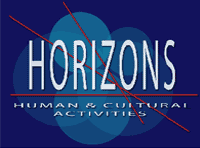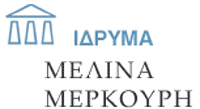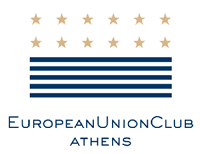Home
Images taken from peace mural done by boys of the Blind Boys Academy, India
Productivity of Culture
Productivity of Culture is indeed a vital focal point when it comes to understand how culture works. By heeding human constraints and attending to problems yet to be resolved, culture brings its creative energies to bear on a given subject that has been prioritized due to affecting so many people's lives. Like Dostoevsky describing the plight of the poor bureaucrat in the nineteenth century or Kafka the loss of orientation in the endless corridors of power in the twentieth century, so it is known at the beginning of the twenty-first century that culture can become productive precisely there, where society is about to abandon both the individual and humanity at one and the same time.
Productivity had been a criterion used by economists when measuring the performance of the industry. In times when reference is made to cultural industries, the assumption can be made that a similar criterion of measurement will be applied to the cultural sector in terms of its capacity to attract so many visitors to festivals and even at the level of a writer how many books he manages to publish every successive year.
But this was not meant by the ECCM-Network Symposium Productivity of Culture and the Kids’-Guernica-Exhibition which took place in Athens from 17th – 21st October 2007 and more precisely on the 18th and 19th of October at the Zappeion Megaron. It was initiated by Spyros Mercouris, Honorary President of the Network of European Capitals of Culture and Months (ECCM) and co-organised together with the European Union Club along with Poiein Kai Prattein. Rather Spyros Mercouris wanted to respond to the recently published study by the European Commission on the growing significance of culture to the economy throughout Europe. He agreed that yes, culture is important for the economy, but to him culture has also the power to regenerate itself and this he wants to stress by opting for such a theme.
By including the Kids' Guernica Exhibition, the Symposium took on still another dimension by showing children's imaginations when they convey their wishes for a world at peace with itself.
The aim of the ECCM Symposium and the Kids' Guernica Exhibition was to substantiate what Melina Mercouri had originally envisioned when she proposed 1985 that a Europe united by culture would have to mean cities becoming Capitals of Culture. To discuss the various issues this raises, it meant the Symposium had to focus on such important fields as cultural policy, role of culture, dialogue between cultures, cultural planning and the crucial culture-economy relationship.
At the same time, it is important to note that the institution of Capital of Culture has been adopted by now world wide, while Kids' Guernica actions are becoming community based actions everywhere. Therefore, this website will want to function as a communication platform for the ‘Network of Networks’. The aim is to link European and international Capitals of Culture with various networks (ECCM - Network of European Capitals of Culture and Month; Capital of Cultures Networks in USA, Latin America, Volga Region and Arabic Countries, and the University Network of European Capitals of Culture). There is a need to face together the global challenge to culture.
Kids' Guernica stands according to the international coordinator Takuya Kaneda for a kind of networking which is bottom-up, face to face and without any hierarchy. In knowing that hierarchy is still in many places and organisations an irresolvable problem, such an open and non hierarchical networking needs to be encouraged in all spheres of life. Indeed what Kids' Guernica exemplifies through work on peace murals, is how children, youth and adults can enter a peace process once collaborative learning based on open communication, friendship and trust is made possible by entering through the imagination a real dialogue with the world.
The world of the twenty-first century needs not resignation, but an optimistic culture to end the permanent institutionalization of war. In this context the cultural dimension within European foreign policy becomes a crucial backbone of the promise made in Europe after 1945, namely 'never again war'. It is linked to what Kids' Guernica expressed in their painting from Nagasaki when showing how they rebuilt the city after the bomb. There are too many Guernicas by now in the world. Taking heed of the productivity of Picasso, that can be reinforced by children at one level who over time can contribute to a new 'Productivity of Diplomacy'. This was an idea discussed by Mr. de la Croix at the ECCM Symposium. Naturally such thoughts end up in a query about how culture can contribute not only to peace but as well to European identity.
In order that such a productive culture is brought about, Michael D. Higgins emphasizes the need for an active cultural policy, one which acts against forgetting by upholding the 'integrity of memory'. Moreover cultural policy has to mean giving public space for artistic expressions. After all culture is what people want to do together and share. More so the world of the twenty-first century needs to create conditions for a culture without war. It does so by letting people from regions of conflict tell their stories even if most difficult to narrate.
All these discussions about culture in relation to other fields have already acquired a knowledge base over the years. The ECCM Symposium held in Oct. 2007 follows the one held as well in Athens 2005. At the same time, the Municipality of Athens announced in Oct. 2007 that it has opened a Documentation Centre about the Capitals of Culture in Europe.
When creating this knowledge base about culture, then reference shall be made as well to the 5th Seminar, "Cultural Action of Europe". It was organised in Athens 1994 by a group of people who constituted themselves later in the Non Profit Urban Society called Poiein Kai Prattein ("to create and to do"). They are poets, planners and actors wishing to bring together categories of creativity and productivity so that both sides of man's activities can come together in a humane language. Culture becomes productive and remains creative by being consistent over time. Like children growing up culture has to prepare them well ahead of time to face the many challenges of this world. For that culture requires a maturation process over time, something to be called 'memory work' contrary to the metaphysics of forgetting being practiced by many in this world of the twenty-first century.
It is an art of life to work through complex matters and still find a simple way of expressing ideas on how to resolve such and other complexities. Consequently this website reflects more a working progress than a final outcome. Hence the changes themselves due to further comments and contributions made, that will be the best indicator of how the tasks ahead shall be faced.
Kids' Guernica is already preparing actions between now and 2010 when the 15th anniversary shall be marked by many events leading up to a special exhibition on Martin Luther King Day in Florida, USA in January 2010.
Hatto Fischer Athens 15.11.2007
| Sitemap »


